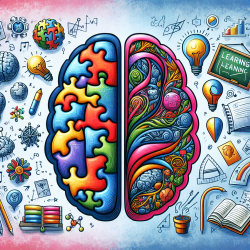Understanding Democratic Backsliding and Its Implications for Child Therapy
As a practitioner focused on creating excellent outcomes for children through data-driven decisions, it's crucial to explore various frameworks that can inform and enhance therapeutic practices. One such framework is the concept of democratic backsliding, as explored in the research article "Carl Schmitt and Democratic Backsliding" by Karolewski et al. While this might seem unrelated to child therapy at first glance, understanding the dynamics of power and decision-making can provide valuable insights into creating effective therapeutic environments.
The Core Concepts of Democratic Backsliding
Democratic backsliding refers to the gradual erosion of democratic institutions and norms, often characterized by the concentration of power in the executive branch and the weakening of checks and balances. Carl Schmitt's political theories, particularly his emphasis on the friend-enemy distinction and the state of exception, have been influential in understanding this phenomenon. Schmitt argued that true political decisions are made in the context of existential threats, where leaders must act decisively, sometimes bypassing traditional democratic processes.
Applying Schmitt's Insights to Child Therapy
While Schmitt's ideas were primarily political, they can be adapted to therapeutic settings. Here's how:
- Decision-Making in Therapy: Just as Schmitt emphasized decisive leadership, therapists can benefit from clear, decisive decision-making when planning and executing therapy sessions. This involves setting clear goals, being adaptable, and making informed decisions based on data and observations.
- Understanding Power Dynamics: Recognizing the power dynamics within therapy sessions can help therapists create a more balanced and effective environment. This includes understanding the influence of authority figures, such as parents and educators, and how they can impact a child's progress.
- Creating a Safe Space: Schmitt's concept of the state of exception can be reinterpreted as creating a 'safe space' where children feel secure to express themselves and engage in therapy. This involves establishing trust and ensuring that the therapeutic environment is free from judgment and external pressures.
Encouraging Further Research
While the direct application of Schmitt's theories to child therapy might be limited, the underlying principles of decision-making and understanding power dynamics can be invaluable. Practitioners are encouraged to explore these concepts further and consider how they might be integrated into their practice to enhance outcomes for children.
For those interested in delving deeper into the topic, the original research paper, "Carl Schmitt and Democratic Backsliding," provides a comprehensive analysis of Schmitt's influence on contemporary political processes. To read the original research paper, please follow this link: Carl Schmitt and Democratic Backsliding.










